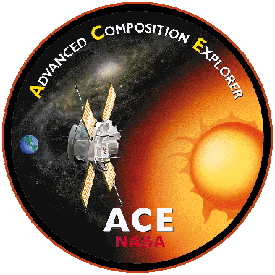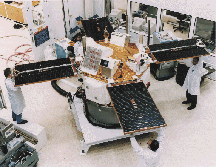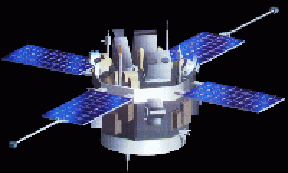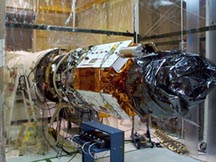Click on image for full size
Image courtesy of NASA
ACE Mission Page
Have you ever wondered what you are made of? Where did the elements come from that make up your body? The elements that make up your body are the same elements found on the Earth. Where did those Earth elements come from? Most would say that the building blocks of the Earth came from the Sun...and that the Sun's material came from the Milky Way galaxy, and the Galaxy's material came from the universe...So you see, if we can better understand the composition of the universe, our galaxy, and our Sun, we can understand how the solar system formed (including the Earth), and perhaps, even our own bodies! Now there is a spacecraft designed to do just this! The ACE (Advanced Compostion Explorer) was launched in August 1997. The main goal of ACE is to study the particles that come near the Earth from the Sun, from the space between the planets, and from the Milky Way galaxy beyond the solar system.
ACE has nine instruments onboard that helps it track particles. The ACE spacecraft will track the solar wind coming from the Sun. ACE also traces galactic cosmic rays which come from interstellar space located beyond the heliosphere (that which is beyond the influence of the IMF), but generally from within our galaxy. The ACE satellite serves as a spaceweather station while in orbit. ACE can provide a one-hour advance warning of any geomagnetic storms that are caused by coronal mass ejections. The effects of coronal mass ejections on the Sun can cause radio, t.v., and telephone communication loss here on Earth.
The ACE mission is an important addition to current missions including Ulysses and SOHO.
The ACE mission has had an extremely successful mission so far. It recently (June 1998) made some exciting discoveries about coronal mass ejections. Here's an animation which describes more...














